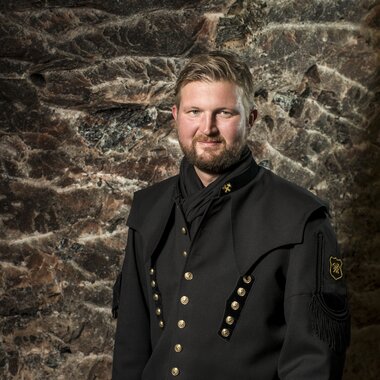5 Facts You Probably Didn't Know About the Altaussee Salt Mine!
Despite its idyllic appeal to tourists, Altaussee actually remains an active mining town to this day.
Here are some fascinating stories about Altaussee you likely haven't heard before!
1. Freedom for the wives 2. The Picturesque Altaussee Lake 3. A Hard Way to School 4. The Servant 5. The Gheant Altarpiece
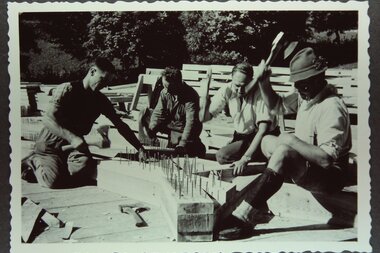
1. The Uprising of the Wives
Currently, about 60 miners work in Austria's largest active salt mine. The peak number was 238 miners in and around 1906. Until the 1960s, rank-and-file miners were "barracked" in the Steinberg area, sleeping in a dormitory during the week. Foremen lived with their families in larger apartments that were actually on the grounds. The company's other facilities such as offices, workshops, a sawmill, and even a forge were located here. When the company's facilities moved to the town of Altaussee itself in 1961, the men were able to be with their families during the week again. Stories abound that the women of Altaussee were not thrilled to give up their customary freedom during the week, provoking a spontaneous march from one end of town to the other, with a black flag in the lead.
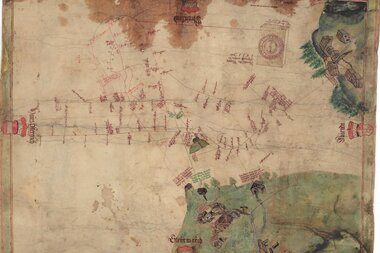
2. Altaussee Lake as a Drafting Tabl
The art of surveying and precisely measuring the mine tunnels was already very advanced in earlier times, even though they had to rely on compasses and simple angle calculations back then. The main task of surveyors was, and is, to define the boundaries granted by mining rights and to delineate different mining operations along these boundaries. The famous master miner of Altaussee, Kilian Kalss, surveyed all Aussee tunnels in 1603 and created the first accurate mine map in 1611. The frozen-over surface of Altaussee lake served as the basis for his planning efforts, upon which he precisely drew the lengths and angles of the mine tunnels on a 1:1 scale in the snow. This must have spanned several hundred meters. Today, modern tools such as lasers and 3-D models are used.
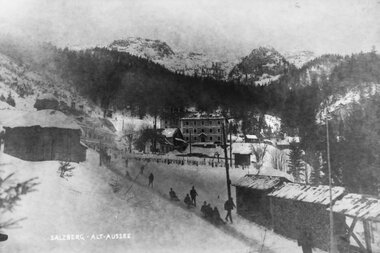
3. The School Path Through the Tunnels
Higher-ranking miners lived with their families in assigned works apartments. One of these was located on the "Moosberg," high above Altaussee. The children, meanwhile, still had to go to school in the village of Altaussee, even during harsh winters. Anyone familiar with the Ausseerland region knows how much snow can fall here! Resourceful children of the mine masters made use of a shortcut through the Moosberg and Steinberg tunnels to avoid having to trudge through the snow. From that point, as often as not they would then sled the rest of the way down to their school. The climb back up was no doubt far more arduous…
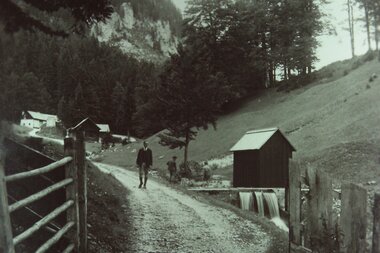
4. Servants for the Wives
The wives of the mine foremen led a privileged life compared to others; they didn't have to do their own shopping, for example, but instead sent the so-called "Gaimel" about five kilometers into the village to fetch their groceries for them. A Gaimel was either a retired miner who could no longer, or a young apprentice who could not yet perform the hard work underground, and was usually tasked with simple chores. Many amusing stories and misunderstandings occurred—much to the amusement of the locals—in the course of carrying out the errands. For example, when a lady from Germany, who had married a foreman, sent the Gaimel to the village of Altaussee to fetch "Blumenkohl" (German for cauliflower), he brought back a bouquet of flowers (known locally as "Kohl") from the garden shop instead! Much to the amusement of some, if not all involved…
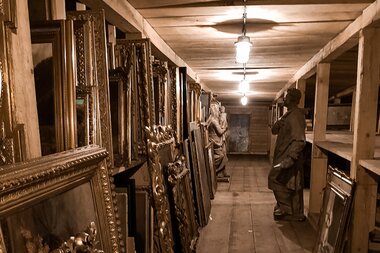
5. The Ghent Altarpiece as a Lunch Table?
During World War II, priceless looted art and cultural treasures from all over Europe were stored in the Altaussee salt mine. A crown jewel among them was undoubtedly the world-famous Ghent Altarpiece. One remarkable story is associated with it: When the Americans liberated Altaussee and secured the art treasures inside the mine, one of the altar panels was missing. A desperate search ensued throughout the mine, but it couldn’t be located and was feared stolen. Just when all hope was nearly lost, it turned up in an underground break room used by the miners. Unaware of its value, they had flipped it over and had been using it as a makeshift tabletop to cut bread and bacon on!
Today, we know this story isn't actually true. But it's too good not to share! It even made its way into the Hollywood movie "Monuments Men" starring George Clooney, where it was relocated, with a dose of "artistic license" to the Merkers Salt Mine in Germany. The story also found its way into the more historically accurate film "A Village Fights Back."
TIP: The Ghent Altarpiece at the Steinberg House
Starting March 23, 2024, our guests can marvel at an interactive projection of the altarpiece!
more info
